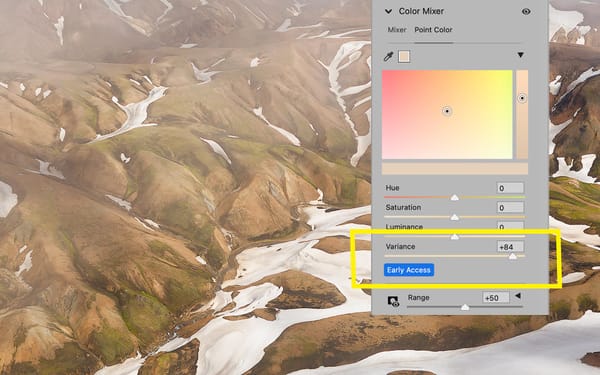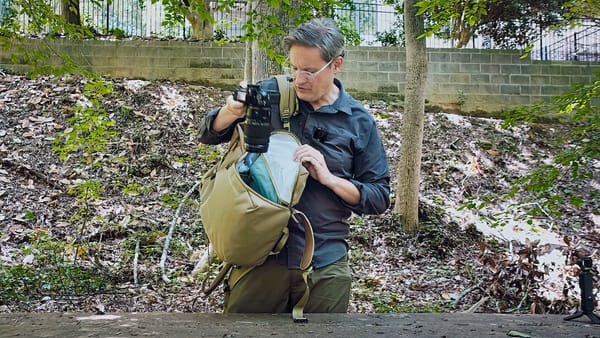Photographing Bisti / De-Na-Zin Wilderness Area
Tips for visiting and photographing the land of mysterious hoodoos and unusual rock formations in northwest New Mexico
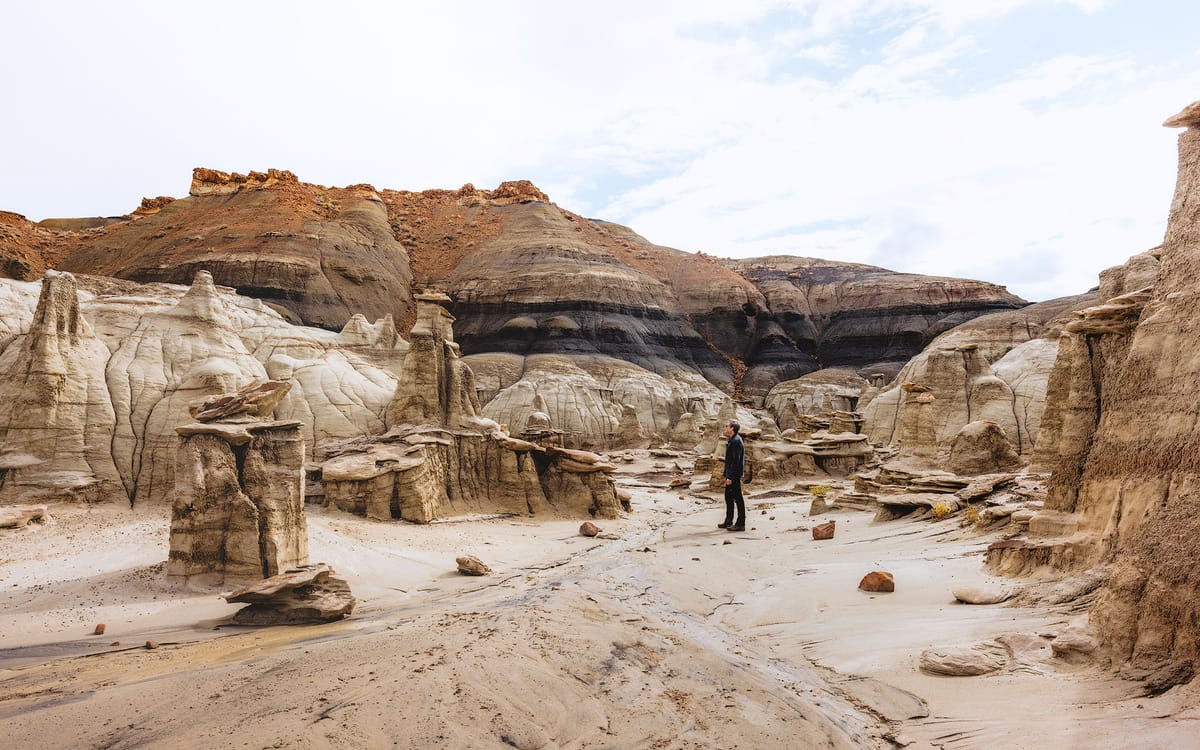
The Bisti / De-Na-Zin Wilderness Area is a 45,000 acre landscape in northern New Mexico. Managed by the Bureau of Land Management, the land is open to the public and is used for hiking, hoodoo viewing, petroglyph and fossil hunting, and yes, landscape photography as well. Cellular access is often spotty and inconsistent. The closest town is Farmington, which is an hour north on road 371 and an hour-and-a-half north on road 550.
When I visited in September 2022, I focused my attention on two areas: Ah-Shi-Sle-Pah and Bisti Badlands. If time permitted I would have visited Valley of Dreams as well, but Ah-Shi-Sle-Pah and Bisti Badlands provided more than enough subject matter.
Ah-Shi-Sle-Pah
Ah-Shi-Sle-Pah (which means "gray salt" in the Navajo language) doesn't appear to be as well known as Bisti Badlands, for there are no signs drawing attention to it from road 550 or anyplace else for that matter. You simply follow the directions of Google Maps a few miles down an unmarked dirt road until reaching a small parking area on the right with a Bureau of Land Management sign so you know you're in the right place. The road gets bumpy in parts, but is mostly flat and smooth. A standard two-wheel drive car shouldn't have any trouble getting there.
Some maps show a dirt road that extends further through the plain to a second parking area closer to the Ah-Shi-Sle-Pah hoodoos, but that road now appears to be permanently closed. It's probably for the best, for it takes only 15-20 minutes to hike from the first parking area by the main road.
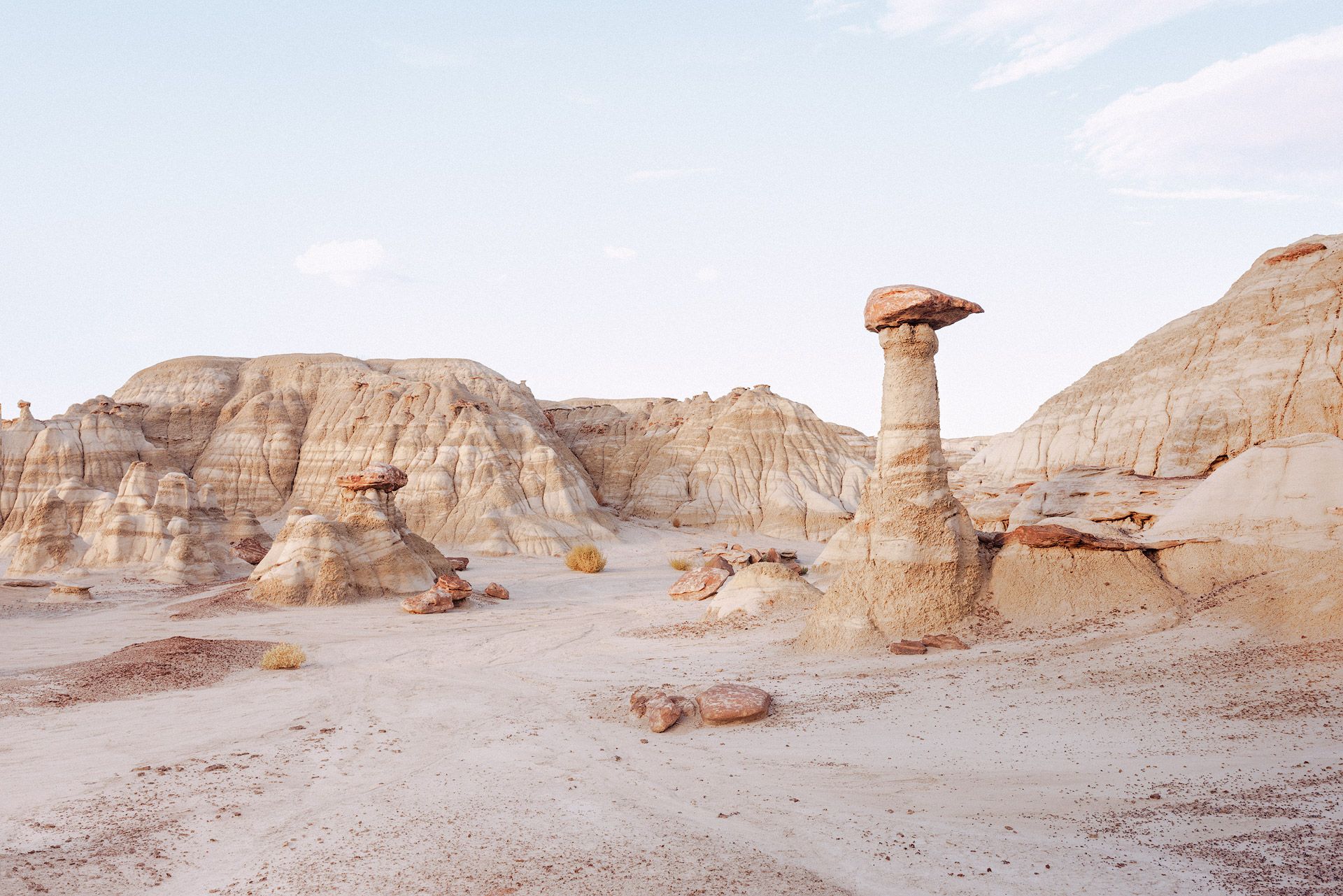
If you're directionally challenged like me, or plan on staying after dark, it's good to have GAIA GPS or AllTrails on your phone. Both will show you recommended pathways to take when hiking, and help you navigate back to your vehicle when leaving.
When hiking, I would recommend being careful when descending slopes into the valley, for the gravel can be very loose and slick. I also noticed deep holes in some of the white sandstone that would be rather painful to fall into.
Bisti Badlands
Bisti Badlands is accessed via a gravel road just off road 371. The road is only a couple of miles long, and takes no time at all to get to a medium sized parking area with vault toilets and one covered picnic area. If driving a camper van, overnight camping shouldn't be problem. Once parked, the Bisti Badlands are a two-and-a-half mile hike through a flat, open desert.
Here again, it's a good idea to have GAIA GPS or AllTrails on your phone so you don't get turned around. If you plan on spending a few hours and taking photos with your phone, would also be worth packing a battery charger in your bag. My iPhone — even with battery saver enabled — didn't last long enough.
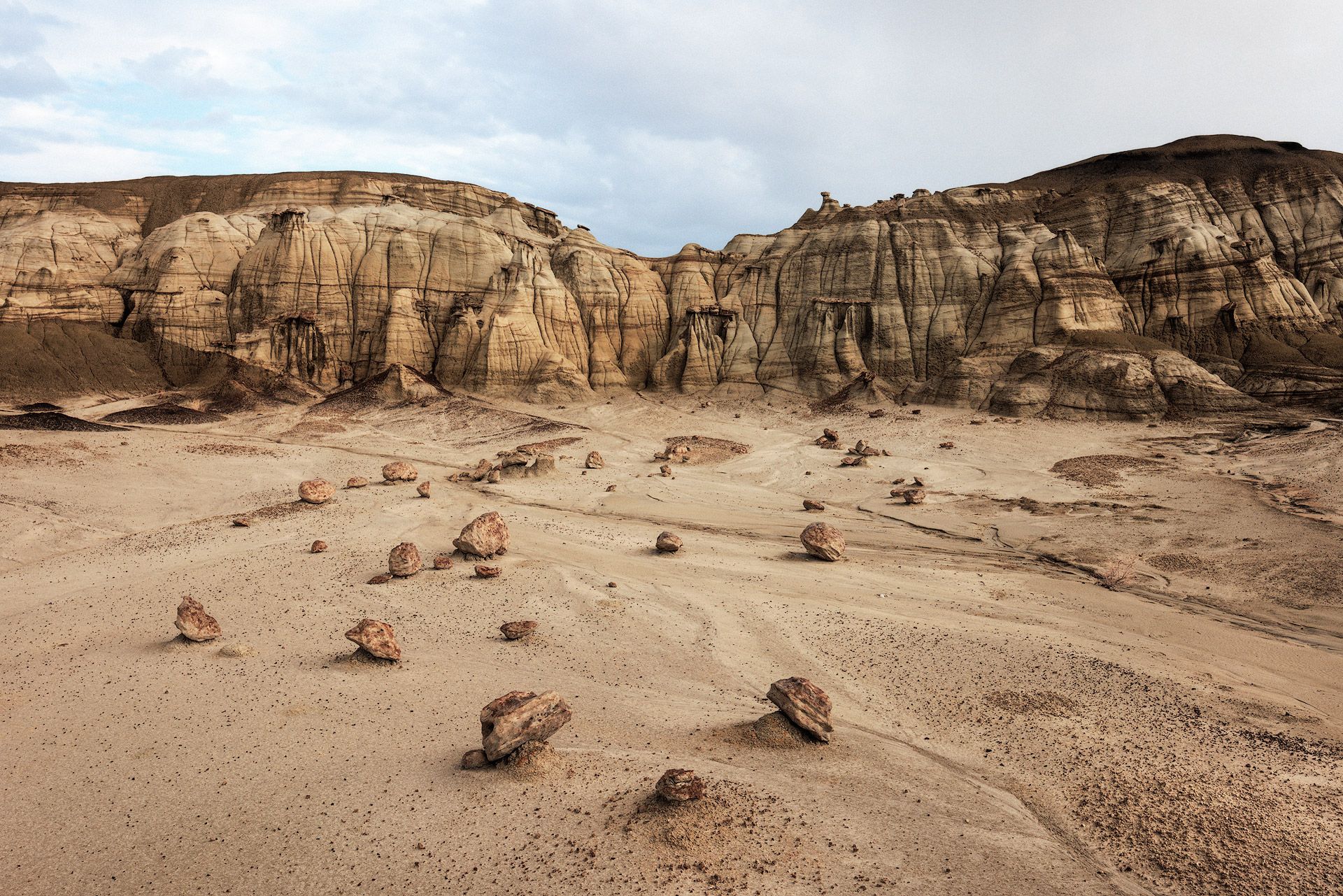
Keep an eye on the weather if planning to visit Bisti. If the temperature is expected to be hot, there is little-to-no shade, water, or anyone around to help you (other than other hikers, if you see any). For that reason it's important to bring more water than you think you'll probably need, plus hats and sunglasses to protect you from the sun.
Rain is also something to check. When I visited Bisti it had rained the day before, and the ground was very muddy and dense in certain spots (so slick and deep I fell twice). The parking area can also get quite muddy as well. Definitely wear hiking shoes you don't mind getting dirty.
Photography tips
Photography wise, Ah-Shi-Sle-Pah and Bisti Badlands are wonderlands for dramatic, ethereal hoodoos. Some are tall with bright orange cap stones, some have lost their crowns and are now beautiful minimal white domes that appear to have bubbled-up from the earth below. The variety of shapes, textures and subjects are fantastic.
For landscape images, I recommend shooting at sunrise, sunset, or both. Sunset is obviously easier, for it doesn't require waking up early and hiking in the dark. If the weather is sunny or partly cloudy, the hoodoos will be bright and contrasty in the middle of the day. I tried taking some bracketed images during this time, and the results (as expected) weren't great. The best light is absolutely at the beginning and end of each day.

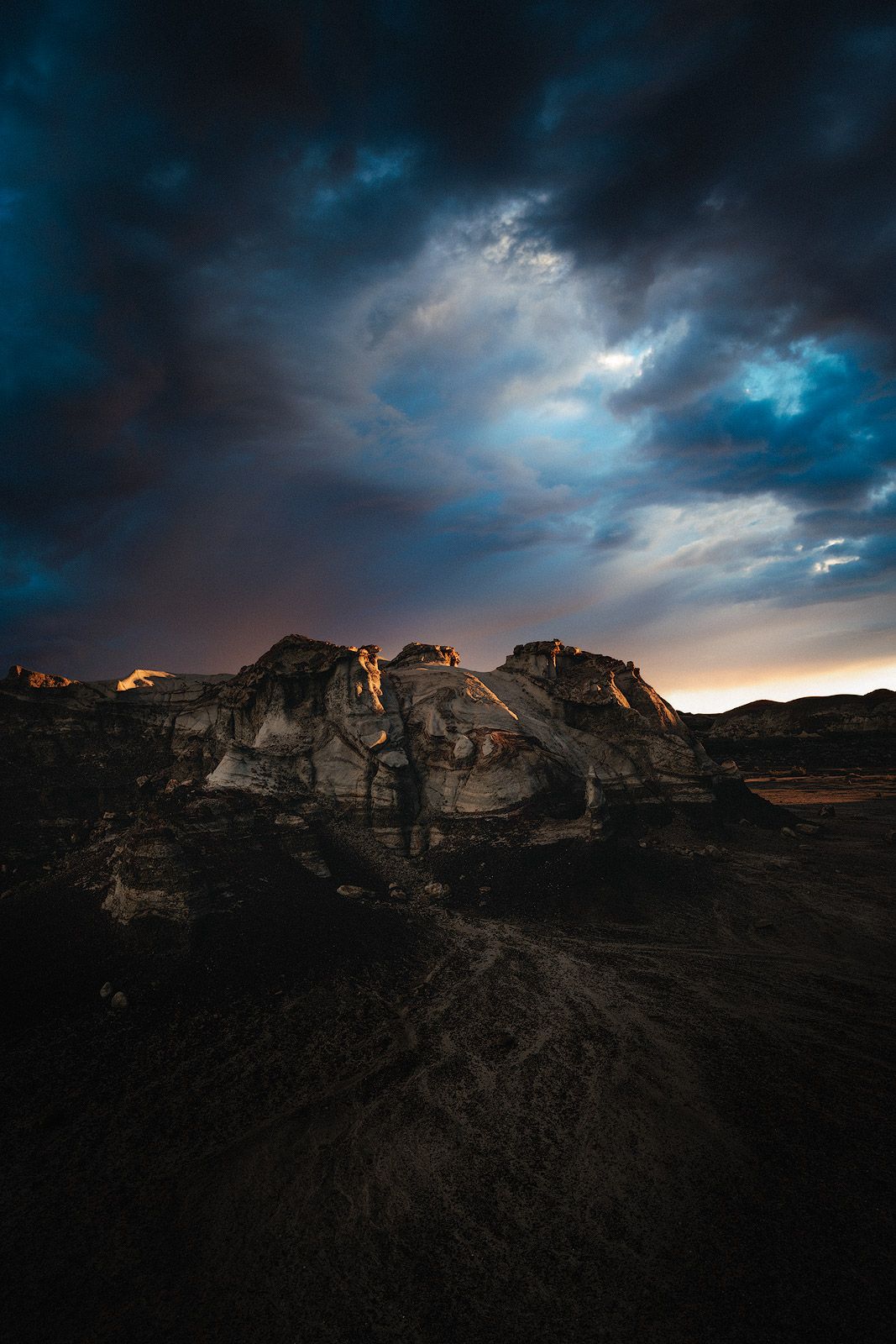
I recommend scoping out subjects while keeping an eye on where the sun is setting. Note whether a hill is present that will block the sun before it gets low on the horizon. If there is, the subject will get dark and not catch the best light.
Of the two, Ah-Shi-Sle-Pah is more compact and quicker to navigate on foot during golden hour and blue hour, so it's possible to photograph multiple subjects within a short amount of time. Bisti Badlands is more open, more dispersed, and more time consuming to navigate.
Lens wise, a variable zoom wide-angle lens (like Canon's excellent RF 14-35mm f/4 L) would work well. That could be the only lens you need (it was for me), but you could also pack a medium variable zoom (like the RF 24-70mm f/2.8, another excellent lens). I prefer shooting with variable zooms for landscapes because they provide the greatest creative flexibility in the field, and I can dial-in my composition exactly how I want it without having to move my tripod around.
Final thoughts
Both Ah-Shi-Sle-Pah and Bisti Badlands are fantastic landscape photography locations with plenty of subjects and creative opportunity. Of the two, I liked Ah-Shi-Sle-Pah more. The area is more compact, the hike isn't as long, and I thought its hoodoos and rock formations were more photogenic. Ah-Shi-Sle-Pah is a longer drive off the main road compared to Bisti, and doesn't offer any facilities, but I very much enjoyed my time there.
Check out my video from both locations below:
For more on New Mexico, check out my photography guide to White Sands National Park.
